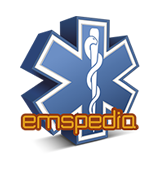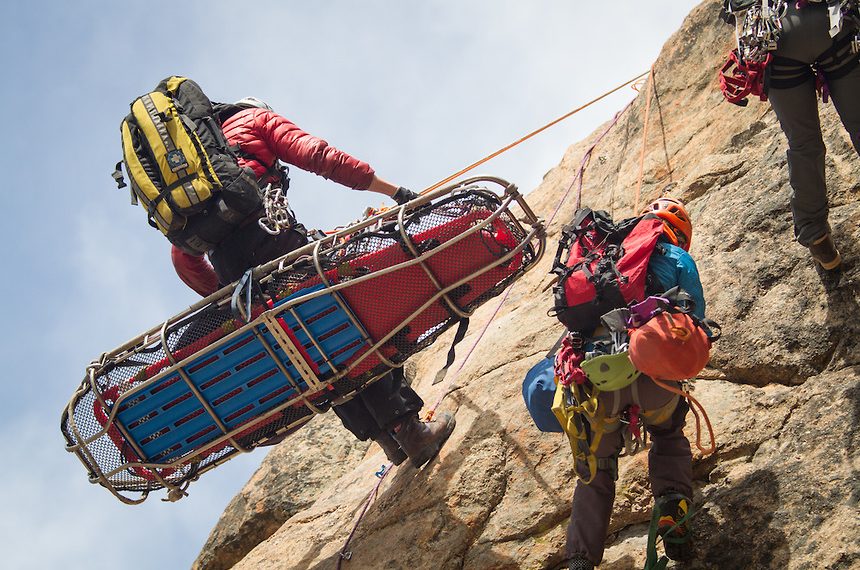A Short Course In Wilderness, Remote & Expedition
Medicine Concepts
Dr. Keith Brown
The Remote Medicine Paradigm
Lesson 1 (part 1): The Remote Medicine Paradigm
Remote medicine is different from first world medical care, everyone would agree with that. But those without significant remote care experience often fail to appreciate just how different it can be. A paradigm is a set of assumptions, concepts, values, and practices that constitutes a worldview.
The remote medicine paradigm is a worldview that embraces rather than struggles with the differences in medical care between the first world and the wilderness, expedition, and austere settings we operate in.
As a professional medical care provider, you have some appreciation for the differences. Isolation, various limitations, and unusual problems all contribute to making remote medical care a “different breed of cat.”We’ll look at these differences in detail, and others as well in this chapter.
We’ll also discuss the “10 Commandments” of remote medical care, and the most valuable knowledge, skills, and experiences you need to have to provide excellent remote medical care. Finally, we will summarize these points and conclude with our take on what you must do – learn – practice to provide excellent care in a remote setting.
We should also point out to you that you need to have a complete understanding of the differences between traditional medical care and remote medical care, not only to be able to provide it, but also to understand and
anticipate the needs and reactions of others. Supervisors, team leaders, supply personnel, tertiary care specialists, and patients themselves often have no prior experience in a wilderness, expedition, remote, or disaster setting. This can lead to frustration and confusion on their part, as they do not understand why things are not being done as they expect – as they have seen on TV, or according to “the book.”
As a trained and certified remote medical care professional, it will be your job not only to care for patients, but also to be able to help them, your teammates, and your supervisors understand the requirements and limitations of providing effective medical care in the remote setting.
There are many factors that differentiate remote medical care from its traditional counterpart. Can you name some? Factors like isolation, limitations on abilities, problems not commonly encountered in routine care, and prolonged care under difficult, resource limited circumstances come to mind. Let’s examine each in turn.
How Remote Medical Care Is Different
Isolation
Be it remote, expedition, far forward, wilderness, or disaster medical care, isolation in one form or another is a nearly universal factor. The isolation can take several, often multiple forms: You may be isolated by physical distance. If you have 100 kilometers to travel, even with a vehicle, that will require a certain amount of time to cover that distance. You may be isolated by travel time. The actual distance may not be great, but if you are on foot, it may require a significant amount of time for travel. An example of this is carrying a patient through the jungle. In that difficult environment, a standard rate of travel may be 100 meters per hour or less. Thus even short distances can require hours to travel.
You may be isolated by geographic & functional barriers . A fully equipped trauma center may be 100 meters away, but if it is on the other side of a flooded river, you may not have easy – or any – access to it. Confounding
factors, such as road condition, weather; geographical limits such as many hills and curves; route security & the need to travel in a convoy; and other factors can all increase the time needed to cover a given distance.
You may be isolated culturally. In some cases you may be with a group you are familiar with and which share your language, values, references, etc. In other cases, not. You may find yourself working through translators the majority of the time. In one case in remote west Himalayan valley we had to work through 6 translators, one dialect to the next, to provide care for a villager from a very remote valley! This sort of isolation can be very stressful.
Limitations
There are many limitations to medical care that you face in almost all remote medical situations, some obvious, some not. This can be a source of considerable frustration to inexperienced providers, who are used to being able to access resources with a word, phone, or radio call.
It can also be a source of sadness and grief, as providers play the ‘if only I had this, I could help this patient’ game. This problem has produced post-event stress, depression, and even led providers to cease providing remote medical care. It must be recognized early on and managed appropriately.
Some limitations we face include:
- Limited diagnostic capability. You will have a very limited traditional diagnostic capability. The technology that we take for granted in urban settings, such as x-rays and MRI scanners, advanced laboratory studies, and similar aids are generally not available to medical providers in remote settings. You will need to learn excellent “bedside” examination skills as well as the use of small diagnostic tools and forgotten techniques.
- Limited therapeutic capability. You will be limited by your therapeutic capacity as well. Surgery, critical care units, many medications, physical therapy, and most other treatments are not available. Generally, you will be limited by what you can carry with, either personally or in a vehicle.
This gives rise to an important concept: “Imperfect solutions to impossible problems.” By that, we mean that in the remote setting definitive care, treatments, and solutions are often not possible; and problems may simple have to be managed rather than solved. This can be source of considerable frustration and distress to both medical providers and patients. Priorities are different in the field. It is important to understand this concept, and come to terms with it. It is truly a reality of the remote medicine paradigm.
- Limited re-supply & support. Re-supply and support are constant concerns in remote medical care. You may have limited – or no – ability to replenish your supplies. So when something is gone, it’s gone! This will require you to decide which patients receive medications and treatments, which can be
managed with alternatives, and potentially which patients receive no specific therapy at all. We’ll discuss this more in the chapter on remote triage. - Limited personnel & assistance. There will rarely be enough help and personnel to assist you in the remote setting. This means you must be able to plan ahead, “multi-task,” and develop the ability to provide clear bedside instructions to patients and team members, so that they can assist you as needed.
- Limited weight & volume capacity. Finally, you will be very limited by the weight & volume of what supplies you can carrywith you. Even when vehicle or building based, you will have significant limits on what you can have available to you, even if you have access to an unlimited supply chain. This will
require you to be very selective in what you choose to take with you.
We call this concept the “mass:utility ratio” since we are really concerned with both weight and volume. Supplies and materials must be very useful, ideally have multiple uses, and be as small and light as possible. The
more weight and/or volume something has, the more important it needs to be for you to consider using it in the remote setting. We suggest you ponder the implications of the mass:utility ratio when planning every aspect of your logistics.
Atypical Problems
The remote medical setting has all of the usual “normal” medical problems seen in the first world plus all of the potential problems that living and working in a remote setting can bring plus all of the unique problems found in that geographical location! To be a medical provider in a remote setting you must master care of all three of these problem sets. In particular, you can expect to be challenged by:
- Multisystem trauma conditions. First world trauma is often confined to isolated fractures and head injuries from falls and motor vehicle accidents, low velocity (handgun) wounds, stabbings, and similar problems. In the remote setting – because of the activities patients are participating in – patients are much more likely to experience catastrophic trauma involving multiple fracture sites and joints, high speed multiple vehicle accidents, high velocity gunshot wounds, agricultural machinery accidents, burns, and similar injuries. The setting, the nature of the patient’s activities, and the mindset of engaging in risky behaviors that perhaps a patient would not do at home all contribute to the increased trauma risk.
- Unusual environmental injuries. Remote settings are much more likely to be exposed to heat, cold, lightening, dust, guano/dung, animal attack, and natural toxins or hazardous plant materials. An example of this is naturally occurring asbestos deposits – it would be impossible for most patients in the first world to be exposed to asbestos in the 21st century, yet some indigenous populations mine asbestos to make a white wash paint for their homes!
- Exacerbation of chronic conditions. The stresses associated few urban people live and work in areas with endemic Malaria, Dengue, Yellow Fever and countless other infectious diseases. These however are part and parcel of everyday life in the remote setting.
- “Rare” medical illnesses. Rare that is, in the first world. Hypothyroid related goiters, Turner’s syndrome, and countless other “weirdomas” tend to come out of thewoodwork as soon as your presence becomes known.
- Prolonged care. You may have extended access times, extrication times, and transport times. You may be responsible for caring for patients for hours, days, or indefinitely. This means that you are very likely to see the progression of an illness or injury process, physiological changes, and the impact (or lack of) of your interventions. Thus you must be familiar with the entire anticipated “natural course” of the illness or injury that you are treating, in order to judge the effectiveness of your interventions and treatments. Extended contact time with patients has additional implications. Longer care also means a greater opportunity for errors and mistakes to creep into the situation. It also means that nutrition, hydration, waste products, fatigue, and environmental factors become of greater concern, not only for the patient but for the providers as well.

